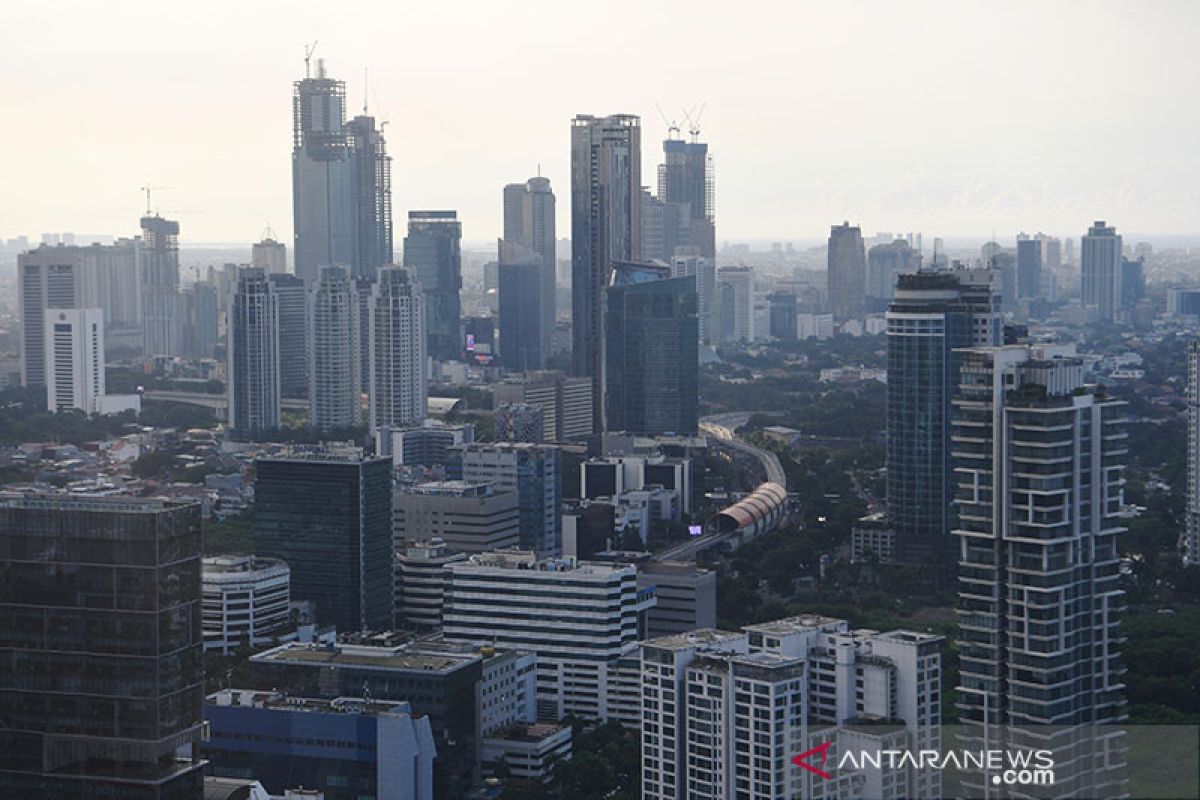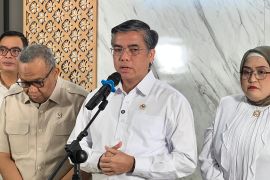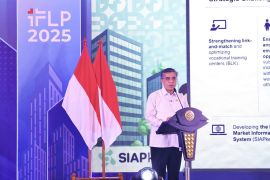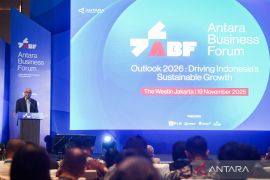Amid the ensuing economic uncertainty, Indonesia has shown positive performance, with the nation’s economy recording 5.17 percent year-on-year (yoy) growth in the second quarter of 2023, as per data reported by Statistics Indonesia (BPS).
Even though the figure is relatively lower compared to the same period of the previous year, when the economy grew by 5.44 percent yoy, it still shows solid economic performance among countries in the Southeast Asian region, especially considering the current global economic climate.
In terms of quarter-on-quarter (qoq) growth, Indonesia's economy grew by 3.86 percent in the second quarter of 2023 compared to the first quarter.
Referring to data provided by the CEIC Data Global Database, Indonesia outperformed other developed countries, such as the United States, South Korea, and Singapore, in terms of economic growth in the second quarter.
According to CEIC Data Global Database, Vietnam's economy grew 4.14 percent, Singapore's 0.70 percent, the US' 2.70 percent, Taiwan's 1.45 percent, Saudi Arabia's 1.10 percent, and South Korea's 0.87 percent in the second quarter.
Indonesia's economic growth is only below that of China (6.3 percent) and Uzbekistan (5.6 percent).
According to the Coordinating Ministry for Economic Affairs, the data has shown that Indonesia's economic growth is still quite solid with relatively controlled inflation.
This has been achieved thanks to the current macro policies that are focused on maintaining stability and encouraging sustainable economic growth to help the nation deal with future economic shocks.
Positive achievement has also been recorded in terms of inflation, with Indonesia's inflation among the lowest at 3.08 percent compared to countries like Germany (6.17 percent), France (4.26 percent), and Turkey (47.83 percent).
The growth of Indonesia's gross domestic product (GDP) has largely been supported by several mainstay sectors.
According to data provided by the BPS, the household consumption GDP growth aspect climbed from 4.54 percent yoy in the first quarter of 2023 to 5.23 percent yoy in the second quarter.
Several factors contributed to this expansion, such as public consumption during Eid al-Fitr, Eid al-Adha, and the school holiday periods.
The distribution of the Eid allowance and civil servants' allowance, locally known as gaji ke-13 (the 13th salary), also helped increase people's purchasing power.
Government spending also experienced a significant increase of 10.62 percent yoy.
This was supported by the revocation of restrictions imposed during the COVID-19 pandemic, which provided greater flexibility to the government to allocate the State Budget (APBN) to sectors that were conducive to economic expansion.
Apart from that, the manufacturing sector also maintained its position as the main contributor to GDP growth, with its contribution reaching around 18.25 percent.
Transportation and warehousing, along with accommodation and food and beverage business activities, also maintained their status as sectors with the highest growth rate in the second quarter. However, compared to the first quarter, their growth showed a decline.
The growth occurred largely due to people's activities returning to normalcy.
Global economy
Amid a positive growth rate, there are still obstacles to Indonesia's efforts to maintain its economic resilience. For now, the sluggish global economy is believed to be the main obstacle.
This is reflected by the contraction in Indonesia's export and import performance. Indonesia's exports recorded a contraction of 2.75 percent yoy in the second quarter and imports 3.08 percent.
Based on those indicators, a senior economist from state-owned Bank Mandiri, Faisal Rachman, projected that Indonesia's export activities will continue to weaken in the future, in line with the global economic slowdown, which will be a challenge for the external sector's performance.
Moreover, realizing an equitable economy is still the main task of the government, so it should not only focus on growth in Java island. This can be seen from the GDP growth in the West Nusa Tenggara (NTB) region, which has still contracted by 1.54 percent.
Deputy for accounts and statistical analyst at BPS, Moh Edy Mahmud, said this has been due to a contraction of 24.45 percent in the mining and quarrying business sector.
Meanwhile, investment, especially foreign investment, will potentially slow ahead of the 2024 General Elections because of a wait-and-see attitude among foreign investors.
Meanwhile, domestic consumption is projected to remain strong, driven by factors such as an increase in people's mobility and reduced inflation, supported by a solid fiscal policy.
If studied further, amid the threat of a global recession, Indonesia's domestic economic landscape has the potential to support the achievement of the target of above 5.3 percent economic growth by the end of the year.
According to the head of economy at Bank Permata, Josua Pardede, ahead of the political year, the political campaign period could boost consumer spending in the fourth quarter of 2023.
In addition, 158 national strategic projects (PSNs) worth Rp1,102.6 trillion, which have been completed, could also have a positive impact on economic growth. The various infrastructures that have been built can improve public facilities for the community.
More importantly, PSNs are expected to encourage efficiency in terms of transportation and logistics that will support an increase in economic productivity in all regions of Indonesia, especially those outside Java island.
Developed country status
Coordinating Minister for Economic Affairs, Airlangga Hartarto, noted that Indonesia's economic growth has remained above 5 percent for 7 consecutive quarters. This has also led Indonesia to return to the category of "upper middle income" country based on the World Bank's classification.
Indonesia's gross national income (GNI) per capita increased to US$4,580 in 2022 from US$4,170 in 2021. This puts it in the same category as China (US$12,850 GNI per capita), Malaysia (US$11,780), and Mexico (US$10,410).
The government is hoping that by late 2024, Indonesia will achieve a GNI per capita of US$5,500.
With this achievement, if Indonesia is able to maintain above 5.3 percent economic growth until the end of the year, it will not be impossible for it to rise to the level of a developed country in the next 13 years.
As a reflection of economic resilience, the growth is clear evidence that despite global recession risks, Indonesia has still managed to make progress in line with its 2045 Golden Indonesia Vision and fueled hopes of becoming a developed country.
Translator: Bayu Saputra, Raka Adji
Editor: Azis Kurmala
Copyright © ANTARA 2023












